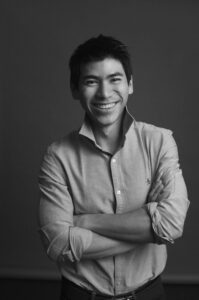Sprinkled in the crowds at Pride marches this weekend, as with every year, will be employees from 23andMe, who will be there with their families, partners and friends to support lesbian, gay, bisexual and transgender culture and civil rights.
“We’ll be there to celebrate the diversity of love,” said 23andMe computational biologist Fah Sathirapongsasuti, PhD. “Like our genomes, love unites us in its diversity. We want to showcase the different shades of love within our own community too.”
When he isn’t marching with his partner in support of LGBTQ rights, or blitzing through a workout, or hiking to the base of Mount Everest, Fah wrestles with some of 23andMe’s most difficult and important research questions. He is instrumental in hunting through mountains of genetic and biomedical data to find new drug targets to treat disease. During his Ph.D. studies at Harvard, Fah developed the first method to detect copy number variations from exome sequencing data, and as an undergraduate at Stanford was honored with the President’s Award for Academic Excellence.
Coming to 23andMe was a natural step, Fah said. It allowed him to to continue to work on the forefront of genetic research, but do it at a place where he felt welcomed.
“This is the work I love, but I’m also inspired by the talented team that is as committed to this science as I am,” he said. “And what’s important for me is that this place doesn’t just welcome diversity it celebrates it.”
23andMe has always been a place that’s inclusive, but this isn’t just about the workplace culture, it is also about the work we do, said Fah, who helps head up the LGBTQ community at the company.
Fah recently invited fellow employees to share their photos of themselves and loved ones that capture moments of love as part of a celebration for Pride Month and the diversity of love within our company.
As a scientist another attraction of working here is the willingness of the company to study many different questions around genetics.
For example, 23andMe began doing research around sexual orientation more than six years ago, in part because our customers said they wanted to know more about this. Ultimately we conducted one of the first large genome-wide association studies of sexual orientation ever done. While we are yet to identify any common genetic markers associated with sexual orientation, we did find some intriguing leads for future research. Genetics clearly plays a role, but sexual orientation is the product of both genetic and environmental factors and more work is needed to determine the role they each play. Adding to the complexity, many researchers conceptualize sexual orientation as having three components like a layered cake: self-identity, behavior, and attraction.
For Fah this is the point of much of the work that’s done in genetics research; it’s fundamentally an exploration about what makes us who we are. It explains both how we are each unique, but also how much more we have in common. Genetically we are 99.5 percent similar.
“We should recognize our common humanity, and also celebrate our diversity and what makes us unique,” Fah said. “There is a parallel with genetics in that while love comes in different forms, in all those forms, love is love.”